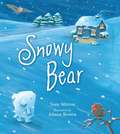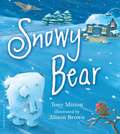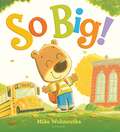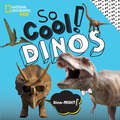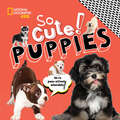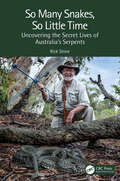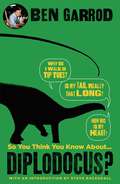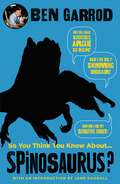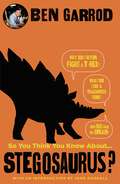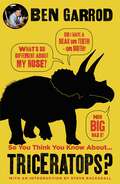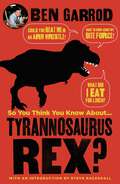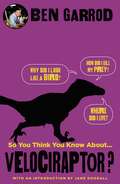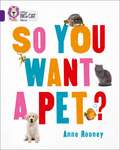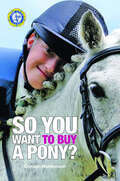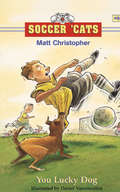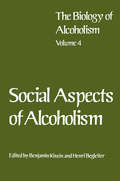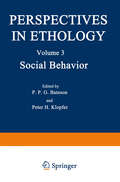- Table View
- List View
Snowy Bear
by Tony Mitton Alison BrownHere is a bear who has nowhere to go,so he's plodding along through the cold winter snow. In the icy-cold heart of winter, a little snow bear wanders through the snow and searches for a home. But where can he go? Each warm place has been claimed, and there is no room for a bear, no matter how little. Suddenly he sees a flickering of light, orange and bright against the snowy ground. It's a house!As Snow Bear pushes open the creaking door, he feels warmth spread over him. There's a girl by the window, who's also looking for a friend, and, somehow, deep down, Snow Bear knows that he is home.
Snowy Bear
by Tony Mitton Alison BrownHere is a bear who has nowhere to go,so he's plodding along through the cold winter snow. In the icy-cold heart of winter, a little snow bear wanders through the snow and searches for a home. But where can he go? Each warm place has been claimed, and there is no room for a bear, no matter how little. Suddenly he sees a flickering of light, orange and bright against the snowy ground. It's a house!As Snow Bear pushes open the creaking door, he feels warmth spread over him. There's a girl by the window, who's also looking for a friend, and, somehow, deep down, Snow Bear knows that he is home.
The Snowy Owl (Poyser Monographs)
by Eugene Potapov Richard SaleThe Snowy Owl - possibly the world's sexiest bird - needs littleintroduction. This massive white owl breeds throughout the Arctic,wherever there are voles or lemmings to hunt, from Scandinavia throughnorthern Russia to Canada and Greenland. Southerly movements in wintersee North American birds travel as far south as the northern UnitedStates, while infrequent vagrants on the Shetlands and other northernisles are a magnet for birders. The Snowy Owl gives this popular bird the full Poyser treatment, withsections on morphology, distribution, palaeontology and evolution,habitat, breeding, diet, population dynamics, movements, interspecificrelationships and conservation, supported by some fabulous photography.A major strength is the availability to the authors of Russianliterature, which is generally out of reach for Western scientists.
The Snowy Owl (Poyser Monographs)
by Eugene Potapov Richard SaleThe Snowy Owl - possibly the world's sexiest bird - needs littleintroduction. This massive white owl breeds throughout the Arctic,wherever there are voles or lemmings to hunt, from Scandinavia throughnorthern Russia to Canada and Greenland. Southerly movements in wintersee North American birds travel as far south as the northern UnitedStates, while infrequent vagrants on the Shetlands and other northernisles are a magnet for birders. The Snowy Owl gives this popular bird the full Poyser treatment, withsections on morphology, distribution, palaeontology and evolution,habitat, breeding, diet, population dynamics, movements, interspecificrelationships and conservation, supported by some fabulous photography.A major strength is the availability to the authors of Russianliterature, which is generally out of reach for Western scientists.
The Snowy Reindeer (Princess of Pets)
by Paula HarrisonWhile visiting her cousins at snowy Peruva castle, Bea finds a tiny rabbit hiding in a pile of logs.The rabbit is cold and hungry, and Bea needs all her skills to make him better.When a precious ring goes missing, can Bea help solve the mystery AND keep the rabbit a secret in the busy castle?Look out for more of Princess Bea's adventures!The Naughty KittenThe Lost PuppyThe Lonely Pony
So Big!
by Mike WohnoutkaA simple, clever text paired with utterly adorable animal characters makes school-day jitters seem not so big after all!Bear is so big, and he's ready to start school! But even if you're SO BIG, you might feel a little nervous at times. Can Bear brave his first day and find a way to make it feel just right? A clever and charming story, So Big! will help young readers through all the important first steps in life. Acclaim for Dad's First DayBank Street Best Children's Books of 2016--outstanding merit titleAcclaim for Moo! An ALA Notable bookA BCCB Blue Ribbon selection
So Big!
by Mike WohnoutkaA simple, clever text paired with utterly adorable animal characters makes school-day jitters seem not so big after all!Bear is so big, and he's ready to start school! But even if you're SO BIG, you might feel a little nervous at times. Can Bear brave his first day and find a way to make it feel just right? A clever and charming story, So Big! will help young readers through all the important first steps in life. Acclaim for Dad's First DayBank Street Best Children's Books of 2016--outstanding merit titleAcclaim for Moo! An ALA Notable bookA BCCB Blue Ribbon selection
So Cool! Dinos (National Geographic Kids)
by National Geographic KidsThose sharp, pointy teeth! Those terrifying claws! Those spikey spines and ferocious roars! Let's face it…dinosaurs are SO COOL! And, well, so is this book!
So Cute! Puppies (National Geographic Kids)
by National Geographic KidsThat wrinkly little face. Those sweet puppy dog eyes. That squishy, pudgy, fuzzy body…let's face it: Puppies are SO CUTE! And, well, so is this book!
So God Made a Dog: 90 Devotions for Dog People
by Worthy InspiredEvery dog is different, but each loves his or her human in a special way. Often they are brave, noble, and strong. Sometimes they make us laugh, at them and at ourselves. Always they make us feel less alone and more loved. These ninety devotions will encourage and inspire you as you see how God is revealed in the antics and actions of our four-legged friends.
So Many Snakes, So Little Time: Uncovering the Secret Lives of Australia’s Serpents
by Rick ShineSnakes are creatures of mystery, arousing fear in many people but fascination in a few. Recent research has transformed our understanding of the behaviour and ecology of these animals, revealed their important roles in diverse ecosystems, and discovered new and effective ways to conserve their populations and to promote coexistence between snakes and people. One of the leading contributors to that scientific revolution has been Prof Rick Shine. Based in Australia, whose snake fauna is diverse and often dangerous, his experiences and anecdotes will inspire a new generation of serpent scientists. Spellbinding stories highlight the challenges, frustrations, and joys of discovery, and give the reader a greater appreciation of these often-slandered slithering reptiles.Key Features Documents the important role played by a preeminent herpetologist. Focuses on research conducted in Australia, especially on snakes. Summarizes highly influential conservation studies. Explores the ways in which research has deepened our understanding of snakes.
So Many Snakes, So Little Time: Uncovering the Secret Lives of Australia’s Serpents
by Rick ShineSnakes are creatures of mystery, arousing fear in many people but fascination in a few. Recent research has transformed our understanding of the behaviour and ecology of these animals, revealed their important roles in diverse ecosystems, and discovered new and effective ways to conserve their populations and to promote coexistence between snakes and people. One of the leading contributors to that scientific revolution has been Prof Rick Shine. Based in Australia, whose snake fauna is diverse and often dangerous, his experiences and anecdotes will inspire a new generation of serpent scientists. Spellbinding stories highlight the challenges, frustrations, and joys of discovery, and give the reader a greater appreciation of these often-slandered slithering reptiles.Key Features Documents the important role played by a preeminent herpetologist. Focuses on research conducted in Australia, especially on snakes. Summarizes highly influential conservation studies. Explores the ways in which research has deepened our understanding of snakes.
So nannte man unsere Vögel früher: eine Zusammenstellung von Trivial- und Kunstnamen heimischer Vogelarten
by Peter BertauIm vorliegenden Werk sind etwa 550 Vogelarten (Nichtsingvogel- und Singvogelarten) in alphabetischer Reihenfolge aufgeführt. Für sie konnten knapp 26.000 vogelspezifische Trivialnamen zusammengetragen werden. Diese Namen sind den Arten direkt zugeordnet worden. So konnten für den Pirol fast 250 Trivialnamen gefunden werden. Trivialnamen sind volkstümliche Namen oder solche, die aus einem besonderen Anliegen konstruiert worden sind, also künstliche Namen.Für die Zuordnungen in diesem Buch ist es gelungen, einen großen Teil der alten und sehr alten Trivialnamen zu ermitteln. Die betreffende Literatur beginnt mit einer Quelle aus dem Jahr 1544: William Turner, Turner on Birds. Die auf Turner folgenden alten Trivialnamen sind in deutschsprachigen und lateinischen Werken sogenannter „Alter Autoren“ zu finden. Zu ihnen gehören Conrad Gessner, Kaspar Schwenckfeld, Johann Leonhard Frisch, Jakob Theodor Klein oder Johann Adam Freiherr von Pernau. Die als „Alte Autoren“ bezeichneten Naturforscher lebten im 16.–18. Jahrhundert.
So You Think You Know About Diplodocus? (So You Think You Know About... Dinosaurs? #2)
by Ben GarrodBiologist and TV scientist Professor Ben Garrod's fun, funny, informative and collectable series of books about dinosaurs is the most up-to-date on the market. This pocket-size series launches with Tyrannosaurus rex, Triceratops and Diplodocus, introduced by Steve Backshall, and is also available in audio download. The series continues with Velociraptor, Stegosaurus and Spinosaurus, introduced by Dr Jane Goodall. These are the most up-to-date dino books in 66 million years! Did you know that not all dinosaurs were green and scaly, some were ginger and feathered, or that they didn't all roar, they cooed like pigeons, or that the ultimate prehistoric predator was actually not a dinosaur? TV scientist, Ben Garrod, is proud to be a geek as he mixes hard science and humour to prove that science is for everyone. Looking at the evolutionary arms race, prey, predators, place, time, groups and species, Ben reveals new-look dinosaurs. Additional sections include: Ask an Expert, New Science and Fossil Finder as well as quizzes to test your dinosaur knowledge. Praise for Professor Ben Garrod: 'A celebration of everything that science is really about' NatSCA. 'A perfect primer for kids to learn more about the amazing "terrible lizards"' BBC Wildlife Magazine. 'He's the man! The genius is his knowledge; the genius is the man himself!' Chris Evans, Virgin Radio Breakfast Show. 'Shines a fresh, contemporary light on this ever-popular topic' The Bookseller. 'Collectable and eye-catching, with plenty of diagrams and illustrations' Books for Keeps.
So You Think You Know About Spinosaurus? (So You Think You Know About... Dinosaurs?)
by Ben GarrodBiologist and TV scientist Professor Ben Garrod's fun, funny, informative and collectable series of books about dinosaurs is the most up-to-date on the market. This pocket-size series launches with Tyrannosaurus rex, Triceratops and Diplodocus, introduced by Steve Backshall, and is also available in audio download. The series continues with Velociraptor, Stegosaurus and Spinosaurus, introduced by Dr Jane Goodall. These are the most up-to-date dino books in 66 million years! Did you know that not all dinosaurs were green and scaly, some were ginger and feathered, or that they didn't all roar, they cooed like pigeons, or that the ultimate prehistoric predator was actually not a dinosaur? TV scientist, Ben Garrod, is proud to be a geek as he mixes hard science and humour to prove that science is for everyone. Looking at the evolutionary arms race, prey, predators, place, time, groups and species, Ben reveals new-look dinosaurs. Additional sections include: Ask an Expert, New Science and Fossil Finder as well as quizzes to test your dinosaur knowledge. Praise for Professor Ben Garrod: 'A celebration of everything that science is really about' NatSCA. 'A perfect primer for kids to learn more about the amazing "terrible lizards"' BBC Wildlife Magazine. 'He's the man! The genius is his knowledge; the genius is the man himself!' Chris Evans, Virgin Radio Breakfast Show. 'Shines a fresh, contemporary light on this ever-popular topic' The Bookseller. 'Collectable and eye-catching, with plenty of diagrams and illustrations' Books for Keeps.
So You Think You Know About Stegosaurus? (So You Think You Know About... Dinosaurs?)
by Ben GarrodBiologist and TV scientist Professor Ben Garrod's fun, funny, informative and collectable series of books about dinosaurs is the most up-to-date on the market. This pocket-size series launches with Tyrannosaurus rex, Triceratops and Diplodocus, introduced by Steve Backshall, and is also available in audio download. The series continues with Velociraptor, Stegosaurus and Spinosaurus, introduced by Dr Jane Goodall. These are the most up-to-date dino books in 66 million years! Did you know that not all dinosaurs were green and scaly, some were ginger and feathered, or that they didn't all roar, they cooed like pigeons, or that the ultimate prehistoric predator was actually not a dinosaur? TV scientist, Ben Garrod, is proud to be a geek as he mixes hard science and humour to prove that science is for everyone. Looking at the evolutionary arms race, prey, predators, place, time, groups and species, Ben reveals new-look dinosaurs. Additional sections include: Ask an Expert, New Science and Fossil Finder as well as quizzes to test your dinosaur knowledge. Praise for Professor Ben Garrod: 'A celebration of everything that science is really about' NatSCA. 'A perfect primer for kids to learn more about the amazing "terrible lizards"' BBC Wildlife Magazine. 'He's the man! The genius is his knowledge; the genius is the man himself!' Chris Evans, Virgin Radio Breakfast Show. 'Shines a fresh, contemporary light on this ever-popular topic' The Bookseller. 'Collectable and eye-catching, with plenty of diagrams and illustrations' Books for Keeps.
So You Think You Know About Triceratops? (So You Think You Know About... Dinosaurs? #3)
by Ben GarrodBiologist and TV scientist Professor Ben Garrod's fun, funny, informative and collectable series of books about dinosaurs is the most up-to-date on the market. This pocket-size series launches with Tyrannosaurus rex, Triceratops and Diplodocus, introduced by Steve Backshall, and is also available in audio download. The series continues with Velociraptor, Stegosaurus and Spinosaurus, introduced by Dr Jane Goodall. These are the most up-to-date dino books in 66 million years! Did you know that not all dinosaurs were green and scaly, some were ginger and feathered, or that they didn't all roar, they cooed like pigeons, or that the ultimate prehistoric predator was actually not a dinosaur? TV scientist, Ben Garrod, is proud to be a geek as he mixes hard science and humour to prove that science is for everyone. Looking at the evolutionary arms race, prey, predators, place, time, groups and species, Ben reveals new-look dinosaurs. Additional sections include: Ask an Expert, New Science and Fossil Finder as well as quizzes to test your dinosaur knowledge. Praise for Professor Ben Garrod: 'A celebration of everything that science is really about' NatSCA. 'A perfect primer for kids to learn more about the amazing "terrible lizards"' BBC Wildlife Magazine. 'He's the man! The genius is his knowledge; the genius is the man himself!' Chris Evans, Virgin Radio Breakfast Show. 'Shines a fresh, contemporary light on this ever-popular topic' The Bookseller. 'Collectable and eye-catching, with plenty of diagrams and illustrations' Books for Keeps.
So You Think You Know About Tyrannosaurus Rex? (So You Think You Know About... Dinosaurs? #1)
by Ben GarrodBiologist and TV scientist Professor Ben Garrod's fun, funny, informative and collectable series of books about dinosaurs is the most up-to-date on the market. This pocket-size series launches with Tyrannosaurus rex, Triceratops and Diplodocus, introduced by Steve Backshall, and is also available in audio download. The series continues with Velociraptor, Stegosaurus and Spinosaurus, introduced by Dr Jane Goodall. These are the most up-to-date dino books in 66 million years! Did you know that not all dinosaurs were green and scaly, some were ginger and feathered, or that they didn't all roar, they cooed like pigeons, or that the ultimate prehistoric predator was actually not a dinosaur? TV scientist, Ben Garrod, is proud to be a geek as he mixes hard science and humour to prove that science is for everyone. Looking at the evolutionary arms race, prey, predators, place, time, groups and species, Ben reveals new-look dinosaurs. Additional sections include: Ask an Expert, New Science and Fossil Finder as well as quizzes to test your dinosaur knowledge. Praise for Professor Ben Garrod: 'A celebration of everything that science is really about' NatSCA. 'A perfect primer for kids to learn more about the amazing "terrible lizards"' BBC Wildlife Magazine. 'He's the man! The genius is his knowledge; the genius is the man himself!' Chris Evans, Virgin Radio Breakfast Show. 'Shines a fresh, contemporary light on this ever-popular topic' The Bookseller. 'Collectable and eye-catching, with plenty of diagrams and illustrations' Books for Keeps.
So You Think You Know About Velociraptor? (So You Think You Know About... Dinosaurs?)
by Ben GarrodBiologist and TV scientist Professor Ben Garrod's fun, funny, informative and collectable series of books about dinosaurs is the most up-to-date on the market. This pocket-size series launches with Tyrannosaurus rex, Triceratops and Diplodocus, introduced by Steve Backshall, and is also available in audio download. The series continues with Velociraptor, Stegosaurus and Spinosaurus, introduced by Dr Jane Goodall. These are the most up-to-date dino books in 66 million years! Did you know that not all dinosaurs were green and scaly, some were ginger and feathered, or that they didn't all roar, they cooed like pigeons, or that the ultimate prehistoric predator was actually not a dinosaur? TV scientist, Ben Garrod, is proud to be a geek as he mixes hard science and humour to prove that science is for everyone. Looking at the evolutionary arms race, prey, predators, place, time, groups and species, Ben reveals new-look dinosaurs. Additional sections include: Ask an Expert, New Science and Fossil Finder as well as quizzes to test your dinosaur knowledge. Praise for Professor Ben Garrod: 'A celebration of everything that science is really about' NatSCA. 'A perfect primer for kids to learn more about the amazing "terrible lizards"' BBC Wildlife Magazine. 'He's the man! The genius is his knowledge; the genius is the man himself!' Chris Evans, Virgin Radio Breakfast Show. 'Shines a fresh, contemporary light on this ever-popular topic' The Bookseller. 'Collectable and eye-catching, with plenty of diagrams and illustrations' Books for Keeps.
SO YOU WANT TO BUY A PONY
by Pony ClubBuying a pony is an exciting prospect, but it can also be daunting and full of pitfalls for the unwary. This publication from The Pony Club helps novice or first time buyers to make the right decisions and avoid slipping up when purchasing a pony. It deals with making plans and working out the likely cost of owning a pony; where to keep him; what sort of pony to buy; assessing conformation of the pony before purchase; viewing and trying; arranging insurance; and making him feel at home.
Soccer 'Cats #8: You Lucky Dog (Soccer Cats #Bk. 8)
by Matt ChristopherLou Barnes puts himself offside during soccer games and that can cost the team a chance at a goal. Then one game a dog runs on to the pitch and reminds him of his position and the offside rule. But who taught a dog how to play soccer and why?
Social Aspects of Alcoholism
by Benjamin Kissin Henri BegleiterThe first three volumes of this series have dealt with materials which generally justify the title, The Biology of Alcoholism. This is only remotely true of the present volume, Social Aspects of Alcoholism, or of the final volume to come, Treatment and Rehabilitation. Except for small portions of the treatment section which involve pharmacotherapy, much of these last two volumes deals with the psychological aspects of alcoholism and still more with the social. It is interesting to review the evolution of this new pattern over the past seven years, a pattern which, had it existed initially, would have resulted, if not in a dif ferent format, at least in a different title. Our initial selection of areas to be covered was influenced by our desire to present as "hard" data as possible, in an attempt to lend a greater aura of scientific rigor to a field which was generally considered as "soft. " When we completed our review of this material in volumes 1-3, we recognized that what we might have gained in rigor, we had more than lost in completeness. These volumes presented a picture of a biological disease syndrome for which the remedies and preventive measures were presumably also biological. And yet, most workers in the field readily accept the significant contributions of psychological and social factors to the pathogenesis and treatment of alcoholism.
Social Behavior (Perspectives in Ethology #3)
by P. BatesonSociobiology is the play of the season. Its success is mellsured by its immense popularity and perhaps by the controversy it has generated as well. Unfortunately, neither its popularity nor the resulting controversy seems likely to assure progress toward understanding sociobiological issues. The play has too many actors and, it seems, the casting has been poor; the players are unable to maintain their roles. At center stage, of course, is E. O. Wilson and his monumental opus Sociobiology. 1 In the wings, and making periodic entrances, are an assort ment of brilliant, committed, and aggressive adversaries. On cue, one of them steps out and decries the self-fulfilling nature of sociobiological prophesies. The arguments of the adversaries are varied. They warn that if all nonhuman primate societies tolerate aggression and man is also a pri mate, then aggression may come to be considered "normal" and therefore acceptable. Their dire warnings may also have real impact on policy, alter ing, for example, a research program intended to examine longitudinally the relation between a supernumerary chromosome and certain behavioral disorders. The rationale is that since the afflicted infants would have to be identified and the study obviously does assume that psychopathology is linked to the chromosome aberration, the attitudes of the child's parents could well contribute to abnormal behavior that might otherwise not appear.
Social Behavior from Rodents to Humans: Neural Foundations and Clinical Implications (Current Topics in Behavioral Neurosciences #30)
by Markus Wöhr Sören KrachThis compelling volume provides a broad and accessible overview on the rapidly developing field of social neuroscience. A major goal of the volume is to integrate research findings on the neural basis of social behavior across different levels of analysis from rodent studies on molecular neurobiology to behavioral neuroscience to fMRI imaging data on human social behavior.
